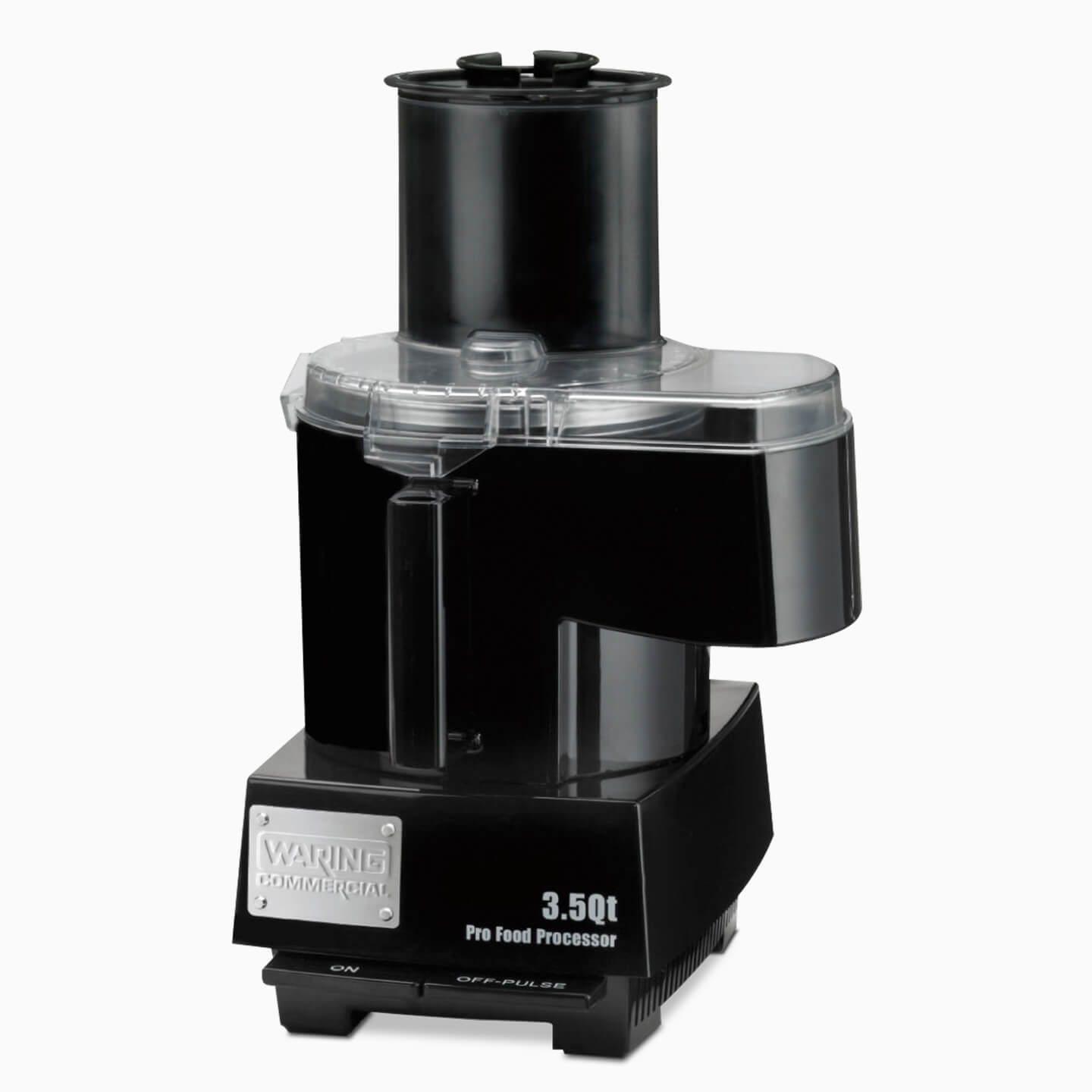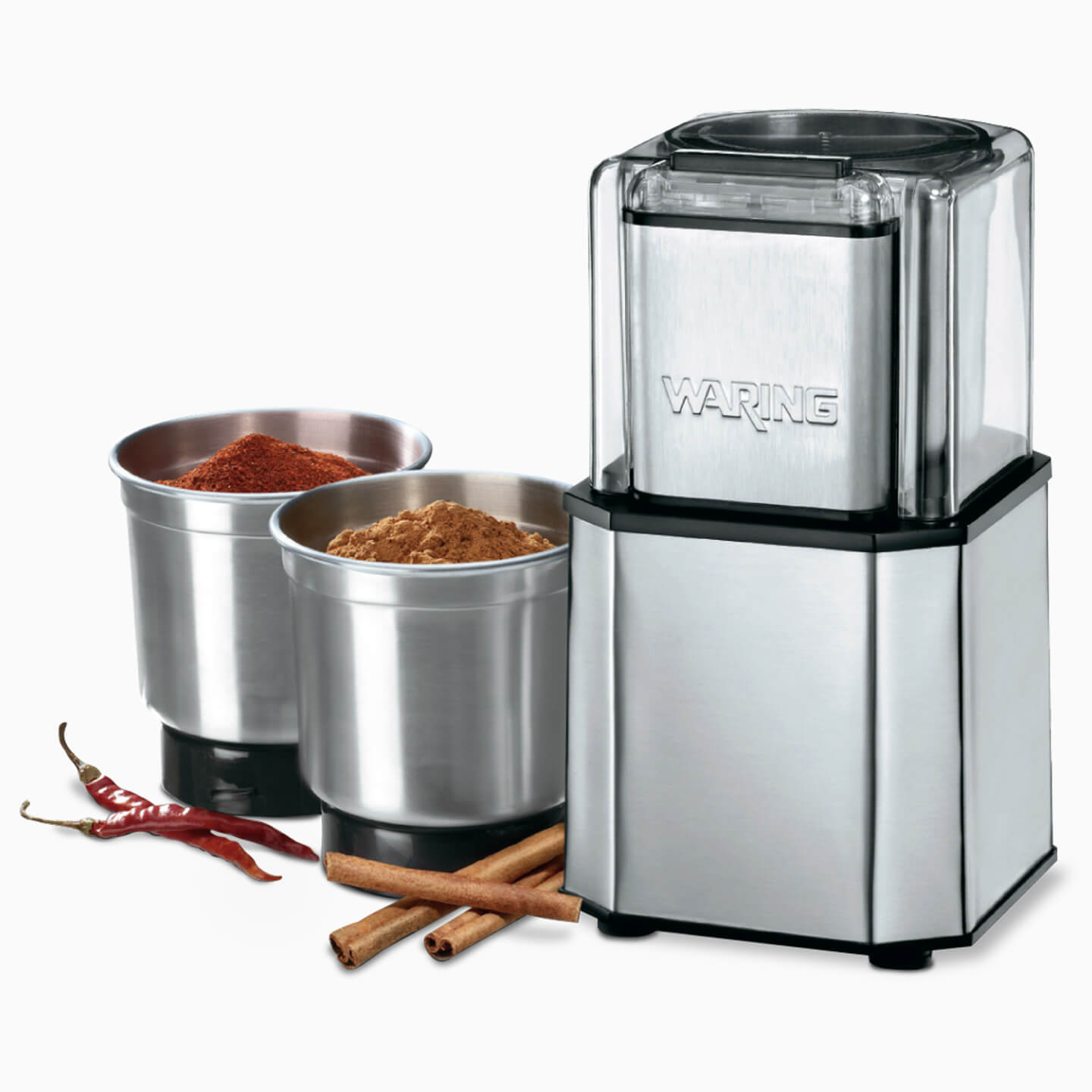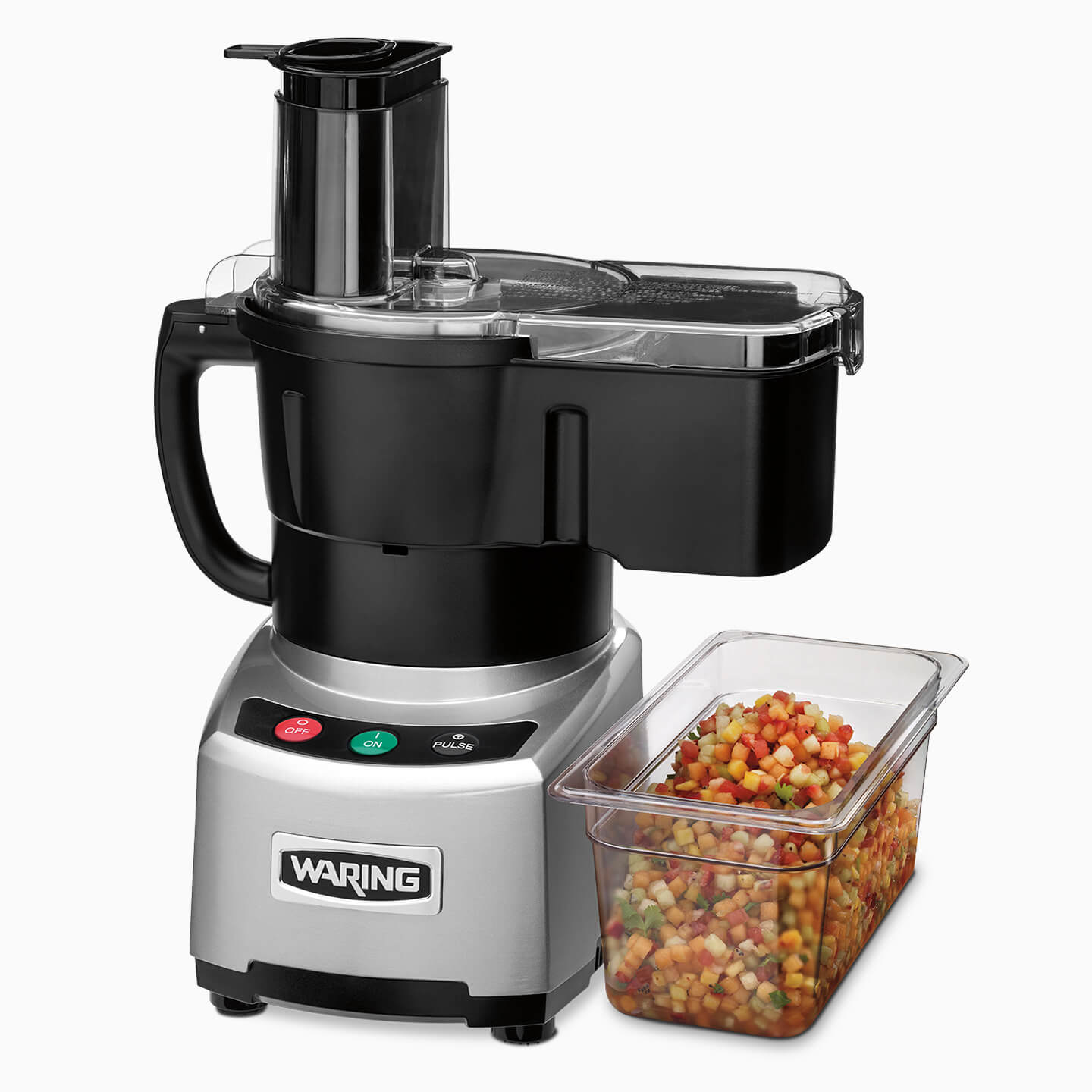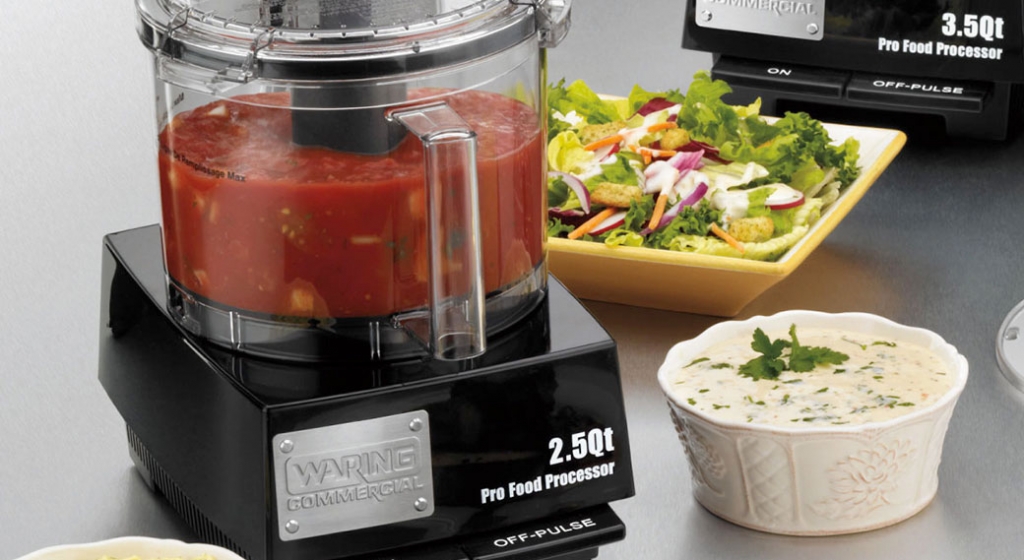Have you ever found yourself spending hours each morning (or evening) prepping fresh fruits, vegetables and herbs for your cooks to use the next day? And maybe you wished you had a couple extra hands to prep food. If you find that chopping, slicing and grinding has become a bottleneck in your kitchen, it may be time to add a commercial food processor to your food prep line.
We had the opportunity to speak to our partners at Waring to ask the basic questions every chef should know when shopping and researching food prep equipment for their restaurant kitchen. Asking these questions while you shop can help ensure you find the best food processor for your venue.
When should you consider purchasing a commercial food processor?
The need for a commercial a food processor depends on your menu. If you are continually cutting vegetables and fruits, grating cheese, or making sauces, butters, and whipped creams – a food processor will streamline all your prep work. The significant amount of time-savings will free your staff to tackle kitchen tasks that require a human at the helm.
Commercial food processors are engineered to be faster, more efficient, and much more consistent. They provide consistent results every time, whereas the use of kitchen cutlery and knives may produce varying results depending on who is on prep duty. It might take a chef two minutes to dice a tomato, but a food processor can bring dicing time down to three seconds. Even small shops that aren’t continuously cutting but wish to scale back on knife usage should consider entry level food processor options.
From pureeing small batches of food in a healthcare environment to large batch operations, food processors are built to give time back to your operations. In addition, each batch of food will yield consistent portions and textures. Your customers will return time and time again, knowing their favorite menu item will be served just how it was during their previous visit.
What is a continuous feed food processor?
Continuous feed food processors are perfect for face-paced kitchens that require a lot of prep ingredients. Restaurants that offer all you can eat soup and salad, most any venue with a buffet, and caterers who need to quickly prepare fresh ingredients for very large audiences could all benefit from a continuous feed food processor. A tremendous amount of time (and money!) can be saved by chopping and slicing cheese, tomatoes, carrots, and olives directly into food pans before being taken to the salad bar.
The distinguishing feature for a continuous feed food processor is an arm chute on the side that shoots processed food into a bowl or food container instead of keeping the food contained inside the batch bowl. In addition, a hopper or an open top with a pusher means chefs don’t need to stop operations since product can continually be added, sliced, and chopped.
Who benefits most from a continuous feed food processor?
Continuous feed shines when an item on your menu has ingredients that require continuous slicing and grinding. For example, if a popular appetizer needs grated cheese, you can delegate the task to a prep cook rather than spending time to continuously grate cheese throughout the day. Your can train staff so if anyone sees the grated cheese getting low simply grab some cheese from the refrigerated prep table. Then they can press it through the continuous feed processor. Grated cheese would be available all day using minimal staff time.
Salsas can also reap the benefits of continuous feed food processors. You just throw all of the ingredients – tomatoes, peppers, cilantro, oil – directly into the food processor and it does all the prep work for you. And if you have a great salsa recipe and it’s a staple of your restaurant, you should definitely consider a commercial food processor. Be sure to consider a continuous feed option if you’re serving salsa all-day every day!

If you only require a food processor for limited use applications – like just for a whipped cream topping on a dessert – you may not need a continuous feed unit.
Can food processors grind spices?
For fine grinding of spices, nothing is more efficient than a commercial grinder engineered to take on the job.
Many chefs use retail coffee grinders to grind up their spices, which is a bad (and costly!) idea in the long-run. Coffee grinders quickly burn out when grinding spices. If you’re putting a whole nutmeg into a coffee grinder, it may only last a couple of months before failing.
Commercial foodservice grinders, are powerful enough for whole nutmegs, peppercorns, ethnic spices, cinnamon sticks, and more. Higher-end grinders can even do wet applications like pastes and oils.
When considering a commercial grinder, the Waring basic entry level is a 1 cup electric spice grinder. Fun Fact: Waring’s 3 cup power grinder was originally designed to be a spice grinder. It was modified to do wet product as well. As a result, you can now make a pesto in the grinder! Place your basil, olive oil and pine nuts in the food prep machine. Then turn it on and you have pesto in only 30 to 60 seconds.

Heavy-duty commercial grinders can also cross over into food processor territory, especially if the application is small volume. For example, this grinder can be used for small volume vegetable prep. The Waring Commercial WSG30 had previously been considered an entry level food processor. But they bumped it down to a grinder as their commercial food processors became more advanced. This small (but powerful) commercial grinder is advanced enough to be used for small-application food processing.
Commercial grinders will also have superior warranties then standard coffee grinders. For example, Waring commercial grinders offers a full 1 year replacement warranty on their grinders, which includes coverage for burn-outs.
When do you need to look into heavy-duty food processing?
The nice thing about Waring’s heavy duty product line, are the price points. When you are shopping Waring food prep equipment, going up to the next step is really about what volume you need rather than what price you can afford. Prices across various food prep equipment are close enough that if you need to upgrade your commercial food processor or grinder to handle a higher capacity, it won’t break the budget of a restaurant owner who is keeping a close eye on margins.
Commercial food processors and grinders are not just for large chain or nationwide restaurants. There are a lot of independent, start ups, and food trucks that benefit from the speed, consistency and efficiency of heavy duty food processors. A food truck can prep nearly all of it’s ingredients in the morning in a fraction of the time. Then you will need less whole ingredients stored on the truck, saving valuable refrigeration space for other product.
Whether you are shredding cheese, slicing tomatoes or find yourself prepping the same type of ingredient all day, it’s time to upgrade from a knife and cutting board to a commercial food processor. However keep that knife and cutting board handy for busy days when you need to prep extra ingredients!

What do food processor discs do?
A key component to food processors are the discs that do the slicing, chopping, dicing, and more. Most food processors use an assortment of disc shapes and sizes depending on application.
- The “S-blade” is the most popular blade for food processors, which gives food a generic slice. Waring Commercial blades offer adjustable slicing discs that give several thickness options on a single disc.
- Whipping discs are for making whipped cream and butter and are unique to Waring Commercial.
- Shredding discs are ideal for carrots and Waring offers a reversible disc with a coarse side and a fine side.
- Grating discs are for nuts, spices, cheeses, and more.
- Dicing discs are are for dicing tomatoes and other vegetables. You can also buy punch tools to help clean dicing discs.
If you need to dice, the entry-level option from Waring Commercial is the WFP16SCD. That model gives you a continuous feed option and the ability to dice. Dicing requires two component parts because you have to slice everything before you dice it. (Otherwise you would just have long french fries.) You can’t dice in a batch bowl; you have to dice through your continuous feed into a separate bowl.
If you decide to purchase a Waring machine, their discs are designed to use as little storage space as possible. With just a few discs, you get a lot of versatility. This is because their adjustable slicing discs and reversible shredding discs offer the versatility normally achieved by over 18 discs!
In addition, if you’re using the same disc all day, you won’t have to worry about sharpening.
How do you care for a commercial food processor?




Why choose a Waring Commercial food processor over other brands?
The patented Liquid Lock System uses a gasket in the lid making the bowl (and your countertops!) safe for processing liquids.
The safety locking mechanism for the S-blade ensures that it snaps into place in the bowl, meaning that you can pour the contents out without the blade falling out. It was designed with the idea that chefs are going to use this for culinary features that include liquids that need to be poured.
Waring Commercial offers a five year motor and two year parts and labor warranty, which is currently the best warranty you can get in the industry. If the bowl breaks or you accidentally destroy a disc, Waring Commercial will replace that for you in the first two years. The motor can be serviced for up to five years.
Compare Waring Commercial Food Processors Side-by-Side →
Shop All Waring Commercial Food Processors»
This is a sponsored post by Waring Commercial.












Best Commercial Food Processor 2023 and Buyers Guide
Every source I can find other than this article says that the WFP16SC is 2 horsepower, not 1. That includes Waring’s spec sheet for it.
Hi Richard, You are correct, the WFP16SC is 2HP. The model we have listed as 1HP is the WFP14SC Medium-Duty Food Processor, which is the correct spec. Thank you for visiting our blog!